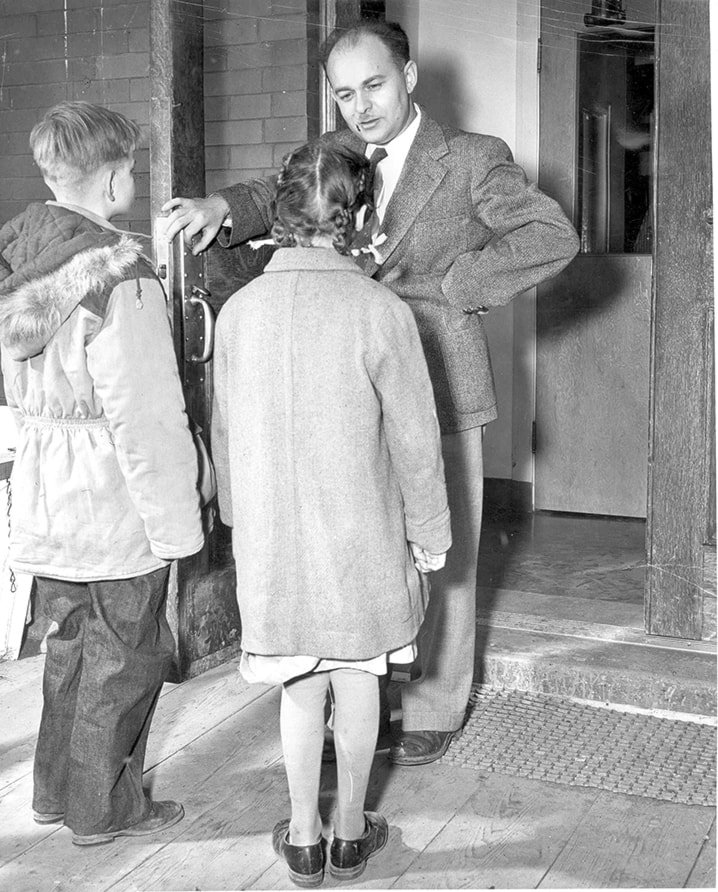The existence of Alberta’s eugenics board for the sexual sterilization of the developmentally disabled came as a rude awakening for many in 1969.
Alberta’s Sexual Sterilization Act was enacted in 1928 to allow the sterilization of those deemed mentally defective. The intent was to protect the gene pool and the Alberta Eugenics Board was created to approve sterilizations.
“There’s a lot of legislation on the books from province to province and people have forgotten about its existence entirely because it just falls into disuse. To think that (the Sexual Sterilization Act) was still being used in the late ’60s was a surprise to the general public,” said David King, who reminded people of the long forgotten act in 1969 when then-Opposition Leader Peter Lougheed asked King to research mental health issues.
At the time, King was a legislative assistant to Lougheed.
“Certainly the (eugenics) board was operating and we were astonished by that. As part of a broader commitment to modernizing the treatment of people who had mental health issues, Peter said before the ’71 election we would repeal the Sexual Sterilization Act if we won the government,” said King, 67, who now lives in Victoria.
Lougheed’s Progressive Conservatives did win and as the newly elected MLA for Edmonton Highlands, King introduced a bill to repeal the Sexual Sterilization Act in 1972.
Alberta was not alone — a few American states still had similar legislation in place.
It was also about the same time that the Mental Health in Alberta report was issued. Known as the Blair Report, it recommended phasing out Red Deer’s Michener Centre.
During Michener’s 91-year history, many of its residents were among the 2,800 youth forcibly sterilized in Alberta under its sterilization act. They included some youth who were not mentally handicapped but confined to Michener from broken homes, as well as children of immigrants or aboriginals who never learned English in their homes.
Red Deer historian Michael Dawe said older generations would say that people who were sterilized had a “Hoadley.” George Hoadley was the minister of health who introduced the bill at the legislature in 1928.
Court challenges from sterilization resulted in the province paying out over $130 million in compensation to almost 800 people by 1999.
Prior to compensation, Alberta Tories threatened to invoke the Notwithstanding Clause to limit damages paid out to $150,000 per person for sterilization victims. That was abandoned after public outcry.
King said people forget that being citizens is not like being business shareholders or members of an organization with limited liability, where they can sell their shares or let their memberships lapse.
“We have unlimited liability for what our governments do, which is one of the reasons we should pay attention when elections are being held. When the government in the ’30s passed that legislation, we who lived in Alberta in the mid ’90s, 60 years later, ended up paying,” King said.
Dr. Robert Lampard, medical director at Michener from 1983 to 2010, said Alberta was the only jurisdiction in the world that had criteria for adjudicating sterilization cases.
“I can’t prove it, but I have the general feeling the Alberta Sterilization Act certainly did not increase the number of sterilizations done. They either remained what they normally would have in other jurisdictions or they were reduced,” Lampard said.
Because of its volume of documentation, Alberta is often the focus of discussion when it comes to sterilization, he said.
“If you want to talk about our program tell me about yours. What is your sterilization rate?” Lampard asked.
He said the issue of sterilization didn’t hang over Michener until Leilani Muir sued the province for wrongful sterilization. She was sent at age 10 by her abusive mother to live at Michener. Tests as an adult showed she was of normal intelligence.
In 1996, Muir was eventually awarded $740,000 in compensation and her victory sparked hundreds of claims.
Lampard said public condemnation of Michener followed.
“Staff have always felt that criticism was unjustified. You have to remember the sterilization program occurred outside Michener. Michener referred cases to the Sexual Sterilization Board,” Lampard said.
“I’ve seen so many pictures of that lovely old admin building held up as this is the focus of, centre of, sterilization in Alberta.”
Lampard said criticism also extended to the overall quality of care at Michener. Much to his chagrin, the media would use a photo of Dr. Leonard J. le Vann taken in a store room. Le Vann was Michener’s medical superintendent when the sterilization act was repealed.
“It was held out as an example of bad care, unacceptable care being provided at Michener. That was a store room of broken beds, and it happened to be a picture that got taken, since there were very few of Dr. le Vann.”
King said sterilization is just wrong, but shutting the doors on Michener won’t necessarily mean sterilization will not resurface in the future and focus on some population somewhere.
Apart from sterilization, Michener was also a monument to doing good, he said.
“Very imperfectly, it was an attempt to provide innovative programming for people with special needs and it was an attempt to ensure that regardless of their family situation, they would have good quality residential life. We can look back at it and say that it failed partly, or wholly, or miserably,” King said.
szielinski@www.reddeeradvocate.com
Coming Saturday: The complicated story of Leilani Muir, for whom Michener Centre was both a safe haven and a place of great sorrow.
